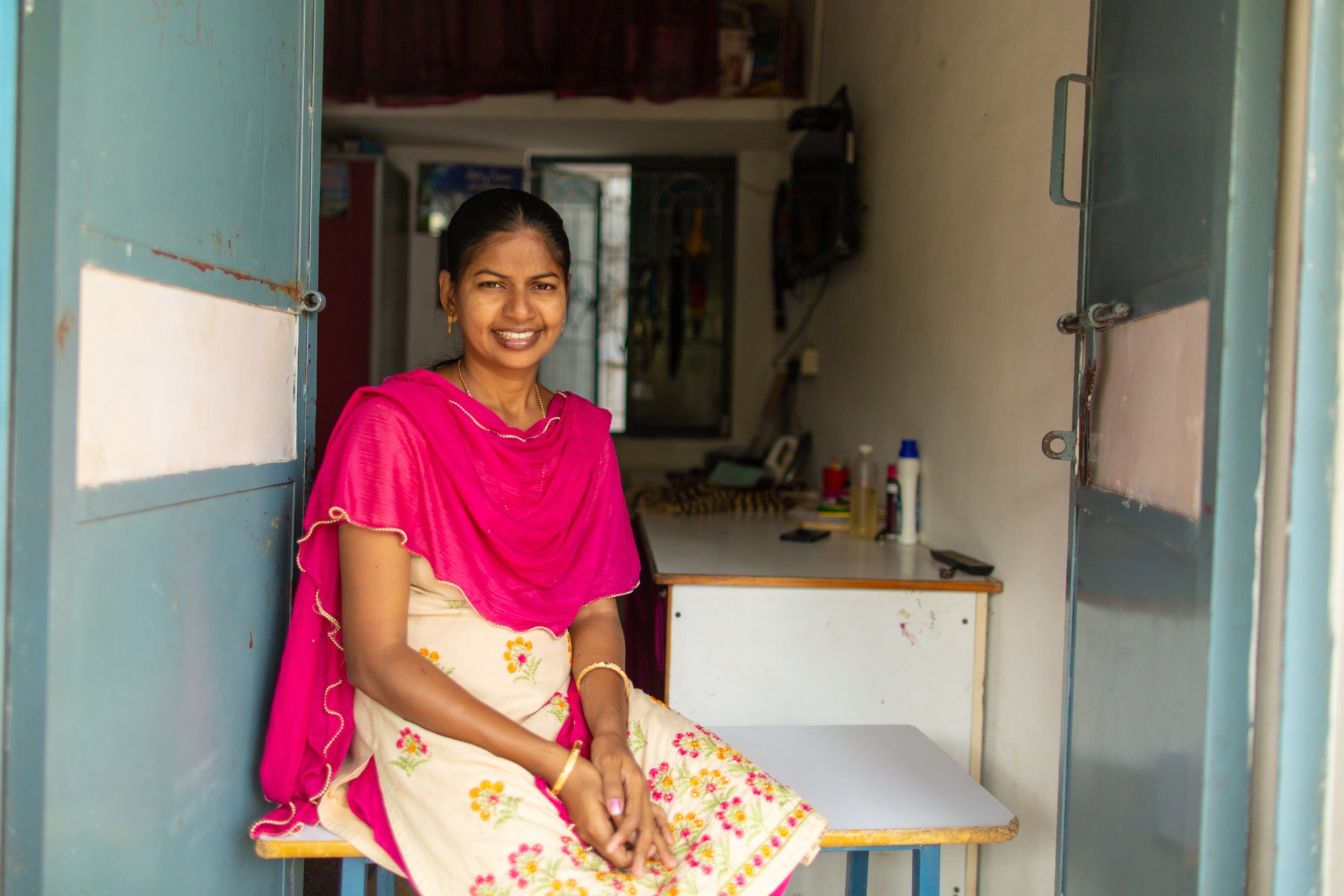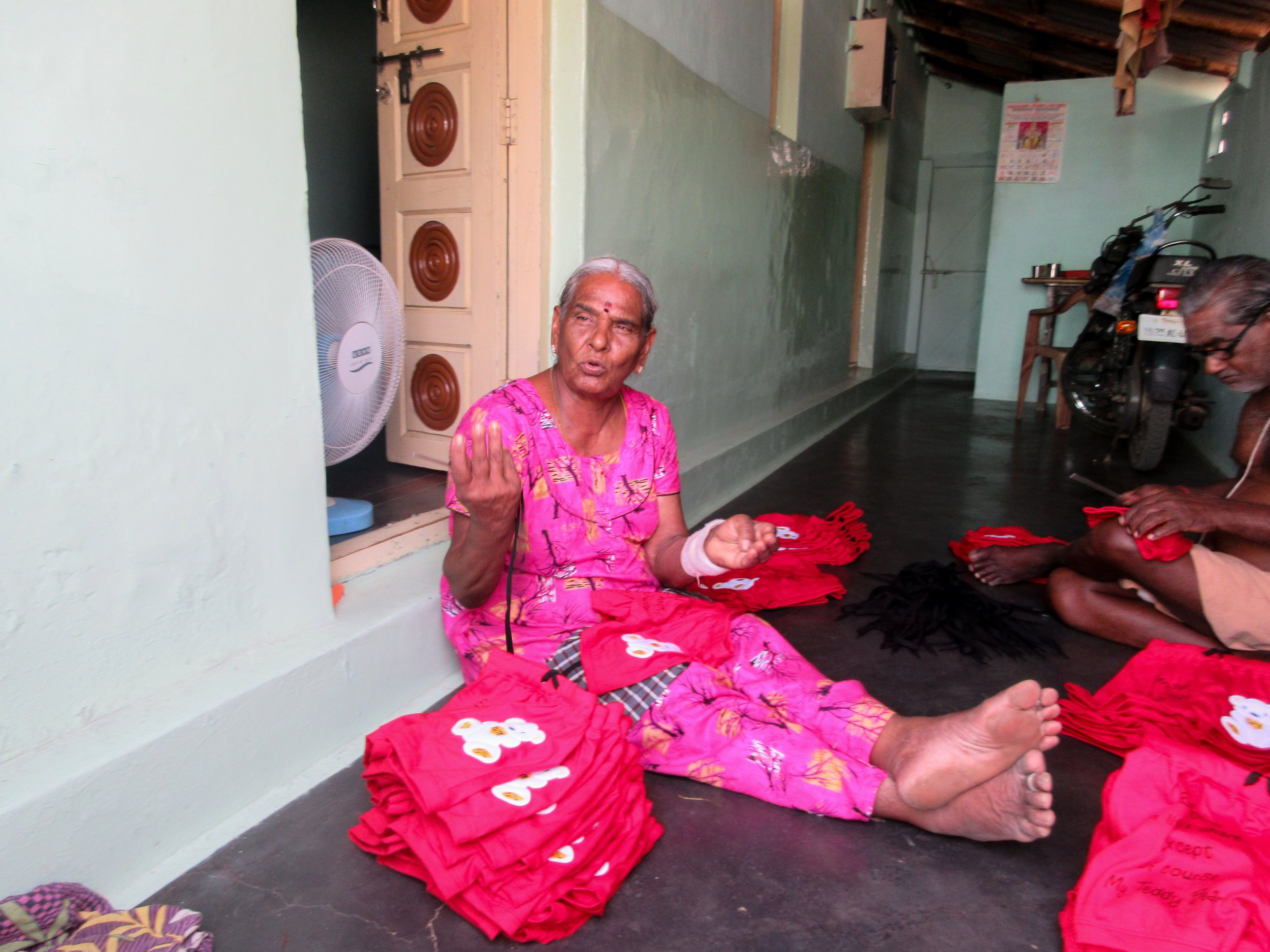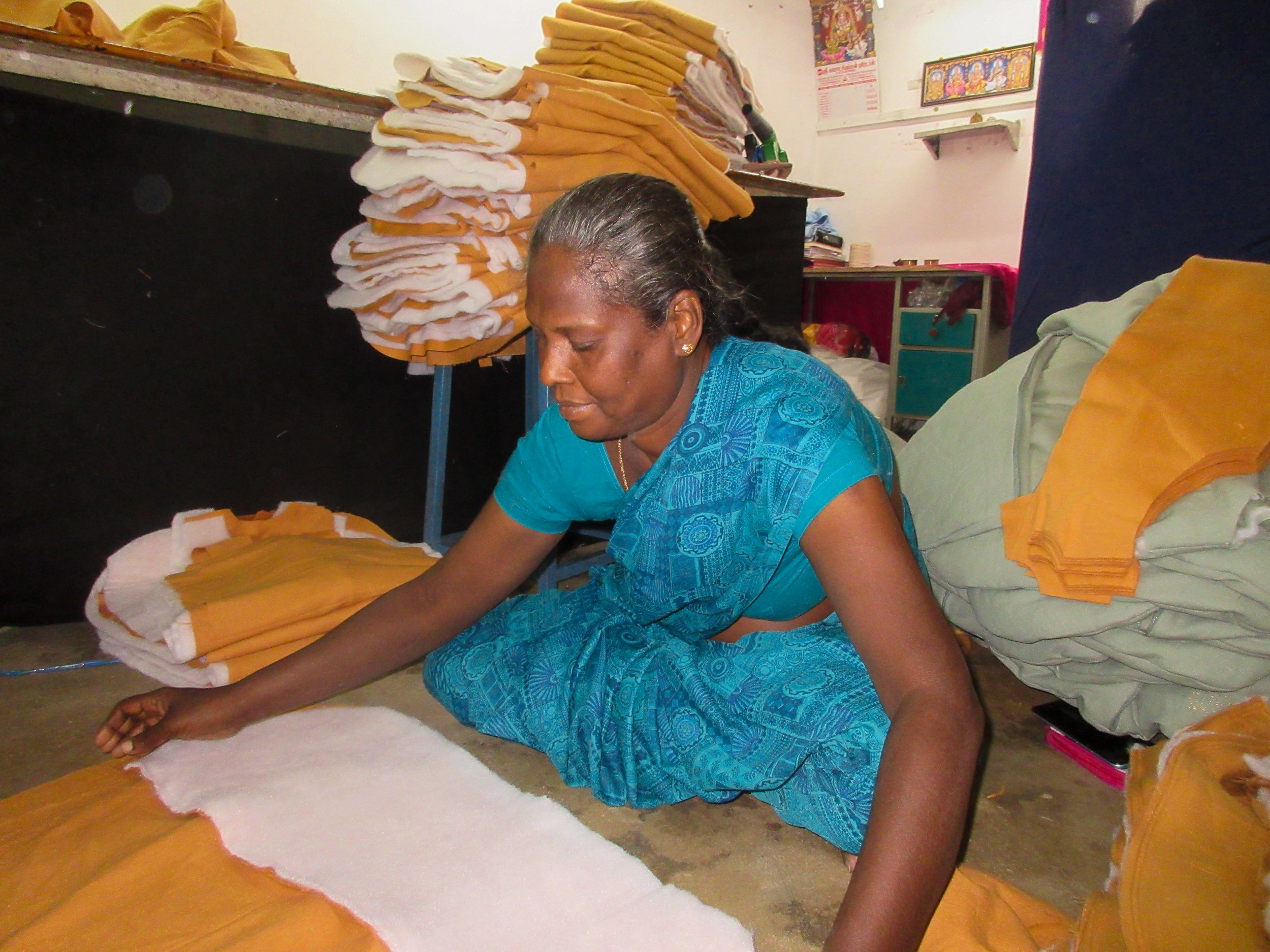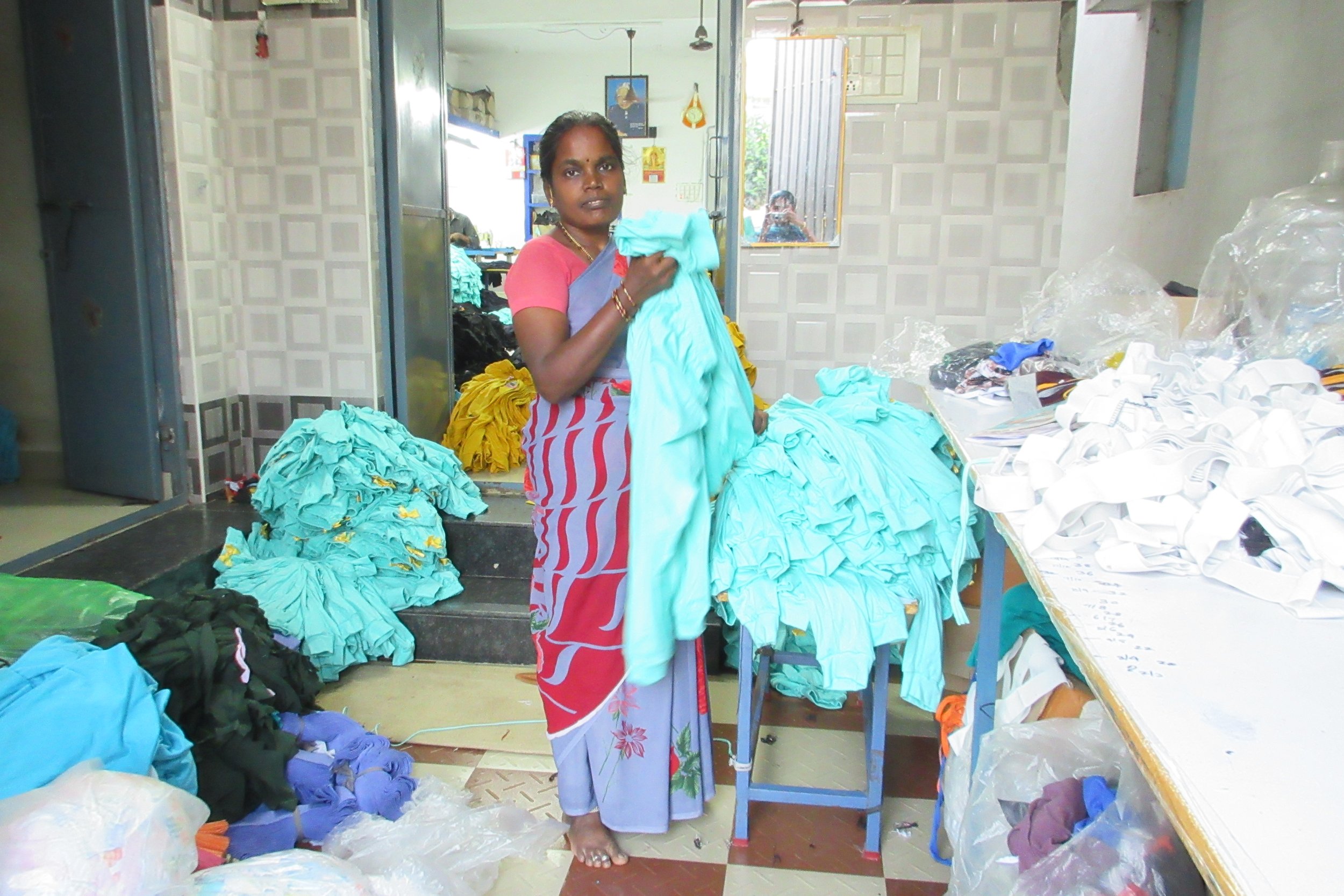
J. Sathya
‘I’d like to keep taking photos after this project. I’m happy we can continue to use the cameras. Before I just wanted pictures to look beautiful, but now I want to capture my work step by step. I want to take photos for income generation. Once I took the camera home, everyone wanted to join in – to get the same training. They asked me where I got the camera, how much it cost.’
J Sathya

“This elderly couple live three roads from me. Her son is married and living away with his wife, so it’s just her and her husband and they need to earn their bread. It is difficult for them. She told me ‘if my son doesn’t take care of me, I have to do this work as there is no other savings or pension to take care of me.’ Her wrist is twisted and it initially hurt her a lot, but it’s less now and although not comfortable she can work. Her husband is doing the threading, which is the part which is most painful for her. She will have gone to a government hospital as there is no medical help from the contractor or any insurance provided for workers like her. They own the house, so they don’t have to worry about rent – only living costs.”

“This lady is not someone I know – when I went to take pictures, I saw her doing this work and took a photograph. Once the waste is segregated by colour it’s shredded and used in the automobile industry. Someone comes to collect it to shred, and then it’s sold on. Here is it not so expensive to buy shredded waste. I didn’t think about the colours when I took the photo, but I liked the picture.”

“Here, she is adding the padding into the cloth – so it’s ready for stitching. You have to line up the layers of cloth. She’s a helper, rather than a homebased worker- she doesn’t know stitching. I chose this picture to show the work happening. I squatted down to take the picture for a better angle.”

“He’s also a homebased worker. In piece work don’t differentiate between men and women, so we are paid the same. This place is right next to my house, and there are five machines where people work on a per piece basis. In this photo, he’s attaching the collars to the T-shirts. The machine is provided by the owner of the small company. There are few men who work as homebased workers – he works here because it’s much more convenient. If he worked in an export company he’d have to travel to the factory. Three of the machines are operated by women, and two by women. I’ve worked here myself doing stitching and attaching sleeves. He was happy to have his picture taken. Since I work there, I could explain what I was doing with the camera, but I couldn’t have taken pictures if I didn’t know the people and the place. The company owner here is also part of Anukhadam, which is why they were OK with me taking pictures! Because the company owner is part of our union, they are good to work for.”

“She’s threading the elastic through these clothes and trimming. It’s her home. The items are dropped at her home, where she completes them. She’s sat in the doorway. I like this photo a lot, it’s one of my favourites because it shows the story of the family. She has no husband and three daughters – it’s a small house. If she sits in the doorway, she doesn’t need to use the electric light and it’s easier to see. Of the three daughters, one goes out as a helper and the other daughter works with her. The third is at school.”

"Santhanam works as helper in a small unit close by my house. He works from 9am in the morning to 8.30 in the evening, she is paid 390 per day and works 6 days a week. Working as a helper is a difficult job, she has to do cutting, folding and packing work. She is not compensated fairly for the amount of work that she’s doing. If she goes out and do the same work in an export company, she will be paid higher but since she has two young kids and the unit is next to her home, she is working here. We should come with a plan to fix minimum wages so that people like Santhanam are paid fairly for the amount of work that they do."
